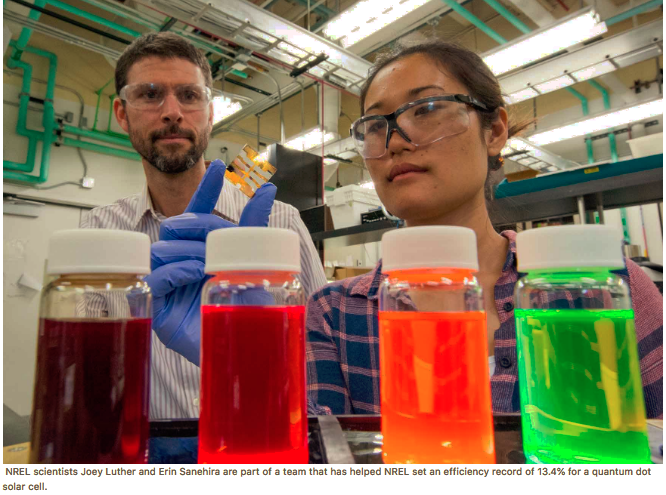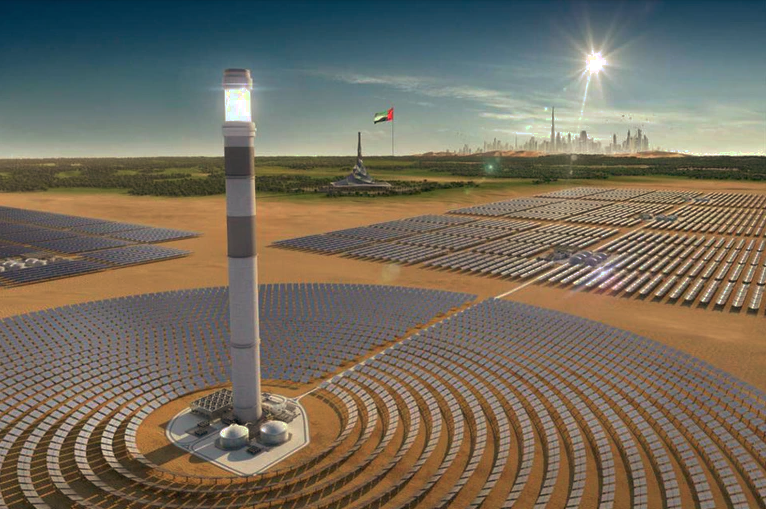Feb 22, 2021 | News
From Aljazeera News to the New York Times to the Christian Science Monitor, Joshua Rhodes, research fellow at the Webber Energy Group at the University of Texas at Austin, founding partner of IdeaSmiths LLC and esteemed TXSES board member, has been in the news a lot lately, sharing his insight and expertise on the Texas power grid failure.
“No one’s model of the power system envisioned that all 254 Texas counties would come under a winter storm warning at the same time,” said Joshua Rhodes to the New York Times.
We’ve compiled a list of media where Rhodes was quoted and interviewed. We’ll update it.
Dec 10, 2020 | News
By David Bearley
Solar Austin, Secretary, Board of Directors
NABCEP Certified PV Installation Professional (#091804-5)
Solar Austin has had its one of its most successful and productive years since its founding in 2002. In spite of the global pandemic, we set records in 2020 for fundraising and monthly happy hour attendance. After years of operating as an all-volunteer board, we hired a three-quarter time staffer. Most importantly, we successfully executed a City of Austin-grant funded equitable clean energy jobs internship pilot program and converted it into a permanent year-round program.
In 2019, Vote Solar and the Solar Energy Industries Association (SEIA) initiated a diversity challenge to the solar industry. Surveys indicate that the solar workforce does not adequately reflect the country’s diverse backgrounds and experiences. As is the case in other industries and construction trades, women and people of color are underrepresented at solar companies and in clean energy careers.
This lack of access, representation, and diversity is not only a problem for underrepresented communities, but also for organizations. Years of studies have proven that workforce diversity and cultural inclusivity create stronger, more innovative, and more resilient organizations. Gender and racial diversity are clearly correlated with profitability, improving a company’s market performance, and overall bottom-line.
To address this problem, Solar Austin developed an Equitable Clean Energy Jobs internship matching program that benefits both employers and employees. Leveraging a $25k grant from the City of Austin, Solar Austin hired a program manager to recruit program participants, which include local clean energy companies as well as students of color and women students, and oversee program operations. In spite of the fact that the summer internships took place during a global pandemic, the Equitable Clean Energy Job pilot program exceeded our goals and key performance indicators.
The internship program benefits students by placing them in paid internships that provide valuable experience in a growing field. The program benefits employers by matching well-qualified students to specific job descriptions. Solar Austin’s strategic partners and consultants not only provide resume writing and job interview training to students but also provide diversity and inclusion training to host companies. It is a win-win for all parties.
Based on the success of our pilot program, Solar Austin has expanded its efforts to cultivate a diverse and inclusive solar workforce via a permanent program that we are calling Pathways to Clean Energy Careers. Solar Austin placed fall interns in October and will place another round of interns in the spring semester. To enhance the value to students, the permanent program provides interns with professional mentors.
As interest in the Pathways program grows, Solar Austin’s biggest challenge is finding host companies, as we consistently have more qualified students than open internship opportunities. We believe that this is a bottleneck we can solve, in part because it is not uncommon for a company to remain engaged in the program after hosting its first intern.
When Solar Austin launched its pilot internship program, its board of directors did not necessarily have a long-term plan in place to fund a permanent program management position. In practice, the timely and successful program benefitting students of color and women students has provided Solar Austin with a compelling story to tell during fundraising and grant writing endeavors. Thanks to the generous response of small donors, business sponsors, and grantmaking foundations, Solar Austin finds itself at the close of 2020 in a strong financial position to continue improving and expanding its innovative and equitable Pathways to Clean Energy Careers program.
Dec 9, 2020 | News
TXSES welcomes three interns for 2021, all of whom are committed to helping TXSES achieve its mission.
“We couldn’t be more fortunate and excited to have these smart, talented students work with us in 2021,” said Pete Parsons, TXSES Executive Director. “With the upcoming legislative session, in addition to all the other projects we’ve got in the works, their energy, passion and spirit will be enormously helpful and an inspiration to us all.”
Meet the interns
 Wyatt Beaver is a University of Texas at Austin Plan II Honors and Government major. His studies as a government major have driven his interest in policy advocacy and policy affairs. Wyatt’s key areas of interest include water rights and environmental issues and the legislative process. “I’m driven by my humbling experiences growing up in a small rural area and am dedicated to pursuing a career in public policy.” Wyatt loves the outdoors; his favorite hobby is hiking. His most recent travel was to Alaska where he saw glaciers that have been around since the Ice Age.
Wyatt Beaver is a University of Texas at Austin Plan II Honors and Government major. His studies as a government major have driven his interest in policy advocacy and policy affairs. Wyatt’s key areas of interest include water rights and environmental issues and the legislative process. “I’m driven by my humbling experiences growing up in a small rural area and am dedicated to pursuing a career in public policy.” Wyatt loves the outdoors; his favorite hobby is hiking. His most recent travel was to Alaska where he saw glaciers that have been around since the Ice Age.
 Meghana Bommareddy is a sophomore at the University of Texas at Dallas, where she studies public affairs and international political economy. She also serves as a writer and production manager for a student-run podcast and as a researcher for a hyper-local policy think tank that advocates for change in the larger Dallas and Texas region. Originally from Michigan, she has been living in Texas for the last decade. In her free time, she likes reading, playing chess, and providing book recommendations.
Meghana Bommareddy is a sophomore at the University of Texas at Dallas, where she studies public affairs and international political economy. She also serves as a writer and production manager for a student-run podcast and as a researcher for a hyper-local policy think tank that advocates for change in the larger Dallas and Texas region. Originally from Michigan, she has been living in Texas for the last decade. In her free time, she likes reading, playing chess, and providing book recommendations.
 Jack Maedgen is a sophomore Government and History major at the University of Texas and an Austin native. He’s been a part of the University Interscholastic League (UIL) and the Texas Orator. “I’m always striving to make a positive impact in my community which is why I am more than excited to play a role in promoting the TXSES vision.” Jack loves spending time outdoors, reading, writing and watching soccer.
Jack Maedgen is a sophomore Government and History major at the University of Texas and an Austin native. He’s been a part of the University Interscholastic League (UIL) and the Texas Orator. “I’m always striving to make a positive impact in my community which is why I am more than excited to play a role in promoting the TXSES vision.” Jack loves spending time outdoors, reading, writing and watching soccer.
Dec 9, 2020 | News
by Roger Duncan
I do not need to spend time to convince readers of this newsletter that solar power is the future of electric generation. But the way we generate that power will include many more technologies than the solar panels we are putting on rooftops today. Indeed, I expect solar panels and coverings to be ubiquitous and very cheap. For many applications, and I know I tempt the gods here, it will be too cheap to meter. Let’s take a tour of the changes we can expect over the coming decades.
First, the conversion efficiency of solar panels will significantly improve. Although PV technology was first demonstrated in 1883, the conversion efficiency of photons into electricity has been slow to improve. Rooftop panels still have a conversion efficiency under 25 percent and only 41 percent has been achieved in the labs. A new technology is needed to make a significant leap in efficiency.

Source: Chemistry World
That will probably be accomplished with carbon nanotubes. Carbon nanotubes could concentrate solar energy 100 times more than regular PV. Carbon nanotube antenna technology can theoretically achieve 80 percent to 90 percent conversion efficiency. We can expect building-integrated photovoltaics (BIPV) and mass application technologies to cover much more than rooftops. Solar windows are probably the next application.
Solar Windows
SolarWindowTM Technologies uses organic photovoltaics (OPV). In 2017, the company licensed its spray-on coating process to Triview Glass Industries. A 50 percent transparent window could produce 50 watts of energy per square meter. However, stability and degradation are problems with OPV. Quantum dot technology could solve that problem. A semiconducting nanocrystal can fluoresce and be embedded in transparent material within a solar window to form a luminescent solar concentrator. Trapped light can then be redirected to a nontransparent solar cell on one edge of the window. The companies Glass to Power in Italy and Physee in the Netherlands both use this technology.

Image credit: Onyx Solar
The largest PV window installed as of late 2019 was a skylight in a London office building that was produced by the Spanish company Onyx Solar. Onyx Solar uses lasers to remove the opaque silicon layer and back contact from thin-film solar panels to make them more transparent. The company also has installations in the NBA’s Miami HEAT American Airlines Arena in downtown Miami and agreed to install the world’s largest PV skylight in the Bell Works building in New Jersey.
Solar Coverings
Three types of solar paints are in development. One type absorbs moisture from the air and uses solar energy to produce hydrogen. A second uses quantum dot technology and could be up to 11 percent more efficient than traditional solar panels. Scientists at the National Renewable Energy Laboratory (NREL) have developed a quantum dot solar cell with 13.4 percent efficiency, surpassing the 10 percent efficiency that many experts consider minimal for the commercial viability of solar paints.

Source: NREL
And assuming that the durability and a few other issues with perovskite solar technology will be solved, spray-on solar paint will be available. These types of solar paint have the potential to expand solar power generation to wall coverings, vehicles, appliances and many other surfaces. The problem with the paints so far is the low conversion efficiency, but the potentially low cost and ease of application will eventually spread this technology everywhere.
Solar coverings may not always be used for the generation of electricity but as an energy efficiency measure. A new type of solar paint could help cool homes. The paint, developed by the Israel-based start-up SolCold, absorbs heat from the sun and re-emits it as higher-frequency light, producing a net cooling effect. According to simulations, applying the paint to the roof of a home could make a top-floor room feel up to 10 degrees C cooler. Shopping malls and stadiums are expected to be among the company’s first customers.
Many stadiums, parking garages, reservoirs, warehouses and other buildings could become primarily power plants, because of their relatively low energy consumption and large surface areas. In the future, it may be common for such buildings to form bilateral power contracts with nearby commercial office and retail buildings.
Some even foresee solar power sources developed in concert with and in nature. Synthetic “solar trees,” such as those in Singapore, could dot our landscape, intermingled with organic plants that may also be hosting integrated energy-harvesting technology. Landscapes may be offering energy, life-giving oxygen and natural beauty in one hybrid ecosystem.

Mohammed bin Rashid Al Maktoum Solar Park, United Arab Emirates. Image: Arabian Business
Utility-scale solar
Even though the future will see ubiquitous solar on buildings, appliances and all sorts of surfaces, the main source of electrical power in the future will probably come from utility-scale solar produced in the world’s great deserts.
Electric transmission lines using advanced superconducting materials could connect the solar power potential of the Sahara in North Africa to the European continent and the rest of Africa. In fact, just one to two percent of the Sahara covered with solar could power the entire planet. The great deserts on each continent – Arabian, Sahara, Gobi, Victoria and Mojave – could easily power the world through an internationally connected grid. Some even envision huge, replicating solar “breeder” plants producing new solar PV on-site, essentially growing the solar plant while simultaneously producing renewably sourced energy.
It has long been known that converting even a fraction of the solar radiation hitting our planet could meet all our power needs. We started with a small device that could convert only 1 percent of the photons hitting it into electricity. In 1954, Bell Labs developed the first solar panels that led to the rooftop and utility-scale installations of today. Now we are on the verge of developing technologies that will truly allow us to make electricity available to everyone on the planet at affordable costs, using every imaginable surface.
Roger Duncan is the former General Manager of Austin Energy and a former Austin City Councilmember. His recent book, along with co-author Michael E. Webber, is “The Future of Buildings, Transportation and Power.”

 Wyatt Beaver is a University of Texas at Austin Plan II Honors and Government major. His studies as a government major have driven his interest in policy advocacy and policy affairs. Wyatt’s key areas of interest include water rights and environmental issues and the legislative process. “I’m driven by my humbling experiences growing up in a small rural area and am dedicated to pursuing a career in public policy.” Wyatt loves the outdoors; his favorite hobby is hiking. His most recent travel was to Alaska where he saw glaciers that have been around since the Ice Age.
Wyatt Beaver is a University of Texas at Austin Plan II Honors and Government major. His studies as a government major have driven his interest in policy advocacy and policy affairs. Wyatt’s key areas of interest include water rights and environmental issues and the legislative process. “I’m driven by my humbling experiences growing up in a small rural area and am dedicated to pursuing a career in public policy.” Wyatt loves the outdoors; his favorite hobby is hiking. His most recent travel was to Alaska where he saw glaciers that have been around since the Ice Age. Meghana Bommareddy is a sophomore at the University of Texas at Dallas, where she studies public affairs and international political economy. She also serves as a writer and production manager for a student-run podcast and as a researcher for a hyper-local policy think tank that advocates for change in the larger Dallas and Texas region. Originally from Michigan, she has been living in Texas for the last decade. In her free time, she likes reading, playing chess, and providing book recommendations.
Meghana Bommareddy is a sophomore at the University of Texas at Dallas, where she studies public affairs and international political economy. She also serves as a writer and production manager for a student-run podcast and as a researcher for a hyper-local policy think tank that advocates for change in the larger Dallas and Texas region. Originally from Michigan, she has been living in Texas for the last decade. In her free time, she likes reading, playing chess, and providing book recommendations. Jack Maedgen is a sophomore Government and History major at the University of Texas and an Austin native. He’s been a part of the University Interscholastic League (UIL) and the Texas Orator. “I’m always striving to make a positive impact in my community which is why I am more than excited to play a role in promoting the TXSES vision.” Jack loves spending time outdoors, reading, writing and watching soccer.
Jack Maedgen is a sophomore Government and History major at the University of Texas and an Austin native. He’s been a part of the University Interscholastic League (UIL) and the Texas Orator. “I’m always striving to make a positive impact in my community which is why I am more than excited to play a role in promoting the TXSES vision.” Jack loves spending time outdoors, reading, writing and watching soccer.


